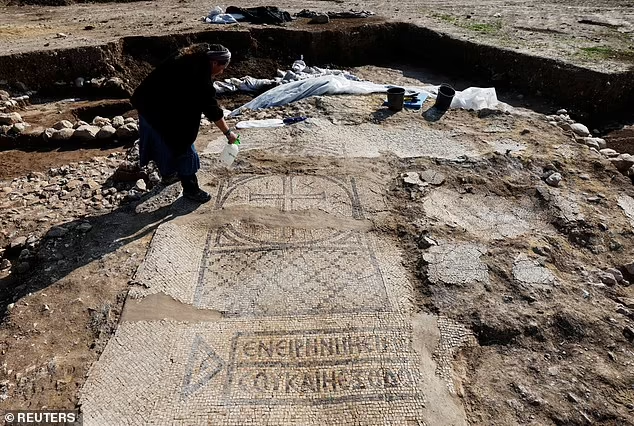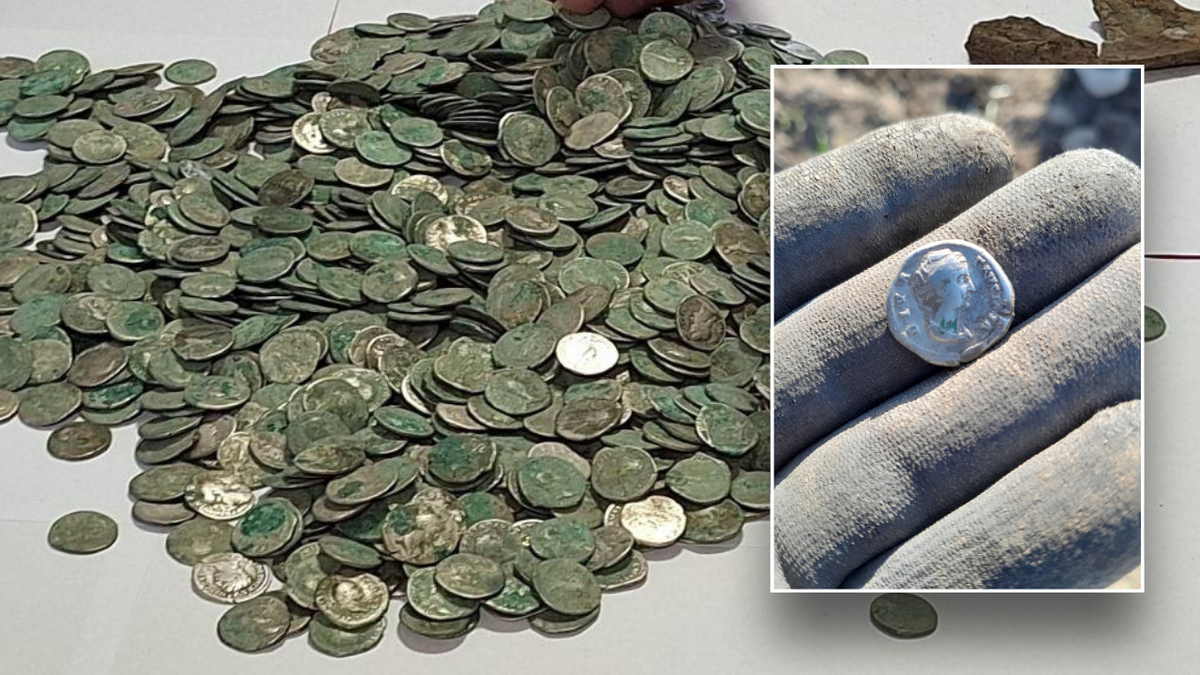Archaeologists have uncovered a 1,500-year-old Byzantine-era monastery near the Israeli city of Kiryat Gat, featuring an extraordinary mosaic inscribed with a Bible verse. This discovery offers a rare glimpse into the religious and cultural life of the Byzantine period.
The Monastery and Its Unique Mosaic
The intricate mosaic, found at the center of the monastery’s floor, bears the inscription, “Blessed are you when you come in and blessed are you when you go out” (Deuteronomy 28:6), written in ancient Greek. The verse, framed by stunning geometric patterns and adorned with crosses, lions, doves, amphorae, and flowers, is a first-of-its-kind find in Israel.
“The mosaic discovered in Kiryat Gat is one of the most unique ever found in Israel,” remarked Mark Avrahami, head of artistic conservation at the Israel Antiquities Authority (IAA). The incorporation of exceptionally small stones into the mosaic’s geometric patterns highlights the artistry and craftsmanship of its creators.
The Significance of the Site
The monastery, dating back to the fifth and sixth centuries CE during the Byzantine Empire’s rule, was located within a settlement that persisted for approximately 600 years, spanning the Roman to Byzantine periods.
“This is the largest and most significant Roman and Byzantine period site uncovered in this area,” noted Shira Lifshitz and Maayan Margulis, excavation leaders. The site includes at least ten buildings, a sophisticated winepress, and a large warehouse, reflecting the settlement’s economic and cultural prominence.
Sophisticated Wine Production
Among the notable discoveries is a highly advanced winepress featuring mosaic floors in its fermentation rooms and collecting vats. Made from blue and white stones, the winepress demonstrates the region’s expertise in wine production. Researchers concluded that this facility produced wine for both local consumption and export across the Mediterranean.
Artifacts Unearthed
The excavation also revealed a treasure trove of artifacts, including coins, marble elements, imported wares, and glass and metal vessels. These finds suggest the settlement’s wealth and status, further underscored by high-quality toys discovered at the site.
Evidence of local pottery production, such as ceramic factory waste, discarded vessels, and unique pottery pieces, provides additional insight into the region’s craftsmanship and trade.
Historical Context of the Byzantine Empire
The Byzantine Empire, which spanned from 330 to 1453 CE, emerged as the eastern continuation of the Roman Empire. During this period, Christianity flourished, leading to the construction of monumental religious sites like the Church of the Holy Sepulchre in Jerusalem. The recently uncovered monastery reflects the broader cultural and spiritual developments of the era.
The settlement’s strategic location at a central road junction connecting the mountains to the coastal plain made it a hub for smaller surrounding settlements and passing travelers. This accessibility likely contributed to its growth and prosperity during the Byzantine period.
Preserving the Mosaic and Its Legacy
To protect the mosaic, it will be transferred to the IAA’s mosaic workshop for preservation before being displayed publicly in Kiryat Gat. “Transferring mosaics is a complex process that requires great skill and precision,” said Avrahami.
The discovery highlights the historical richness of Kiryat Gat and its surroundings, offering invaluable insights into the religious, economic, and cultural life of the Byzantine period. As excavation and preservation efforts continue, this remarkable find will undoubtedly enhance our understanding of the ancient world.







